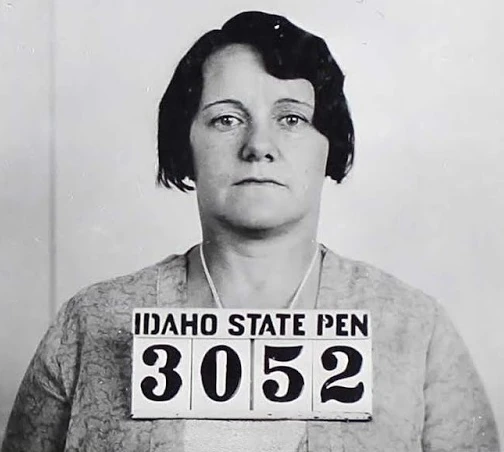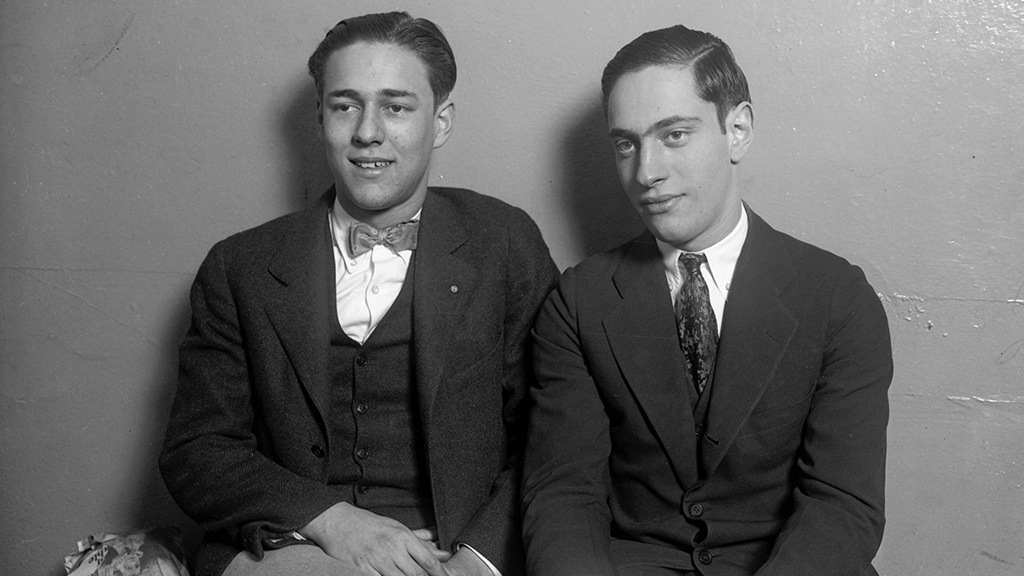To anyone who saw the string of unfortunate deaths that followed Lyda Southard around, they assumed the poor widow must’ve had some kind of bad luck curse.
However, “Flypaper Lyda” was actually quite lucky. Lucky and rich. Over the course of six years, she would accrue $10,000 (a little over $175,000 in today’s money) from insurance policies she collected on. But how was she getting all of these policies?
The first person to perish at Lyda’s hands was her two-year-old daughter, Lorraine Dooley, who died in 1915. Lyda explained the girl’s death as an unfortunate accident of drinking water from a dirty well.
The next to die was Ed Dooley, her brother-in-law with whom she and her husband lived with on his ranch in Twin Falls, Idaho. He died in August 1915, with the official cause of death listed as ptomaine poisoning.
To the outside world, it must’ve looked like the grim reaper had befallen the Dooley household, because just two months after his brother’s death, Robert Dooley, Lyda’s husband of three and a half years, died from typhoid fever, leaving Lyda as the sole survivor of the Dooley family. She collected on the insurance policies of each family member and moved on.
In 1917, she met and married a man named William McHaffie. After only a short time into their marriage, his three year old daughter passed away. The couple moved to Montana following the young girl’s death, but were only together for a little over a year before William died on October 1, 1918 from influenza and diphtheria.
A mere five months later, in March of 1919, Lyda married car salesman Harlen Lewis, who lasted only four months into their marriage before dying of gastroenteritis. A year later, she moved back home to Idaho and married ranch foreman Edward Meyer, who lasted only a month before dying on September 7, 1920 of typhoid fever.
Anyone paying attention might’ve noticed that the time between Lyda’s husbands was growing shorter and shorter.
Earl Dooley was a chemist in Twin Falls Idaho. More notably, he was the cousin to Lyda’s first husband and brother-in-law, Robert and Ed Dooley.
Lyda’s many tragedies didn’t sit right with Earl Dooley. He suspected foul play, and raised the alarm to Twin Falls Deputy Sheriff Virgil Ormsby, who began investigating.
The bodies of Lyda’s previous husbands and daughter were exhumed. All of the bodies were in immaculate condition, despite years underground.
Arsenic is a naturally occurring element. It’s been used for thousands of years for many different purposes. It was used by the Ancient Egyptians in the process of mummification. It was added to a certain bright hue of green during the 19th century.
It was used as poison.
All of the bodies, as well as Lyda’s cookware, tested positive for arsenic. A warrant was immediately issued for her arrest, but she had already split town. Lyda moved to Honolulu, where she married a Navy man stationed there named Paul Southard.
The Idaho State Life Insurance Company of Boise confirmed that Lyda had collected on many of the insurance policies of her dead husbands. She was taken into custody by Honolulu police in May 1921.
The newspapers exploded. This was the biggest case in Idaho history. Lyda Southard was Idaho’s first serial killer. Not the first female serial killer; the first ever.
Over a hundred and fifty witnesses showed up to testify against her. However, her husband and parents still supported her.
She made the case that she carried typhoid and had accidentally passed it along to her husbands, daughter, and step-daughter. Her story was quickly debunked after a shopkeeper testified that he sold her large quantities of arsenic-laced flypaper. After twenty-three hours of deliberation, the jury delivered the guilty verdict and she was sent to serve out her sentence at the Old Idaho State Penitentiary.
Lyda was a charming woman. She was the model inmate, a friendly face. She was so charming, in fact, that Paul Southard didn’t divorce her until 1928, seven years after she was convicted on second-degree murder of Edward Meyer.
David Minton, a former inmate who had unrequited romantic feelings for Lyda, helped her escape on May 4, 1931. She abused his affections and dumped him, fleeing to Denver, Colorado, where she took up residence as a housekeeper for the wealthy Harry Whitlock, whom she married in March 1932.
But Lyda was still an escaped convict. Harry Whitlock and David Minton ultimately assisted the police in her eventual arrest in Topeka, Kansas on July 31, 1932. Southard returned to the Old Pen and eventually was released on probation a decade later, in October 1941.









